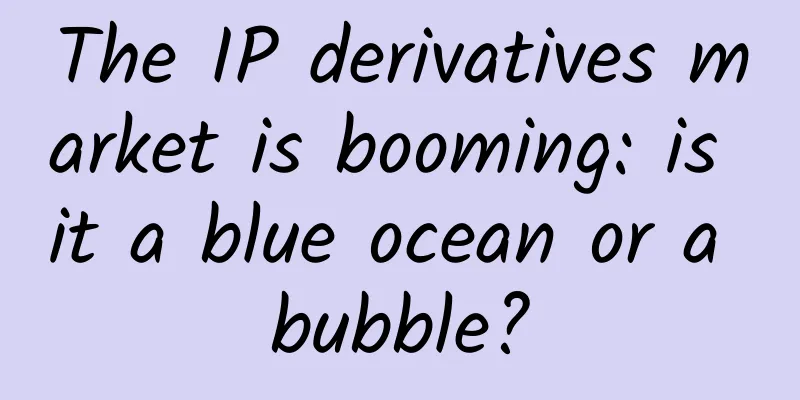It can make a loud noise and has incredible destructive power... What kind of psychedelic bubble is this?

|
Produced by: Science Popularization China Author: Wang Yongjiu (Institute of Mechanics, Chinese Academy of Sciences) Producer: China Science Expo Editor's note: In order to understand the latest developments in cutting-edge science and technology, the China Science Popularization Frontier Science Project has launched a series of articles titled "Understanding Top Science Journals", which selects outstanding papers from authoritative journals and interprets them in plain language as soon as possible. Let us broaden our scientific horizons and enjoy the fun of science through the window of top journals. In early 1942, a U.S. submarine was on a mission in the Makassar Strait when its listening equipment was frequently disturbed by mysterious "crackling" noises. At first, the source of these noises was confusing. However, as scientists discovered large gatherings of pistol shrimps in nearby waters, they began to speculate that these marine creatures might be the source of these abnormal noises. In 1946, the Naval Electronics Laboratory of the War Research Department of the University of California published an interesting research report, revealing the real source of these huge noises - the violent collision caused by the rapid closing of the giant claws of the pistol shrimp. Report on the study of noise caused by pistol shrimp by the Naval Electronics Laboratory, War Research Department, University of California A hand-drawn picture of a pistol shrimp claw magnified 9 times (Image source: Reference 1) However, it was not until 2000 that Lohse, a professor of applied physics at the University of Twente in the Netherlands, and his research team, combined high-speed photography technology and hydrophone equipment to truly uncover the mystery of the noise, which was actually caused by bubbles formed in the movement of the water jet. What is even more surprising is that these bubbles can not only make a loud noise, but also have amazing destructive power. Seeing this, people can't help but wonder, how are these mysterious bubbles produced? Why can they make such a loud noise? Why do they have such powerful destructive power? (A) Signal obtained by the hydrophone in the experiment (B) The development and evolution of cavitation bubbles captured by a high-speed camera (Image source: Reference 2) What is cavitation? In order to answer the above question, we must understand a basic physical principle: that is, in a fluid, the pressure decreases when the flow rate increases, and the pressure increases when the flow rate decreases. This is the embodiment of Bernoulli's principle. At the same time, the boiling point of the liquid decreases as the pressure decreases, which is why it is difficult to cook eggs in boiling water at high altitudes. Back to the topic of pistol shrimp, the rapid closure of its large claws can generate high-speed water flow of up to 115km/h. The low pressure formed by this speed is enough to make liquid water directly convert into water vapor without heating, forming the bubbles we see. This process is called cavitation. After cavitation bubbles are produced, the pressure inside the bubbles is much lower than the external water pressure, so the bubbles will be squeezed and contracted rapidly, and eventually collapse and destroy, generating shock waves and a sound of nearly 210 decibels. Pistol shrimps use these cavitation bubbles to become deadly masters in the ocean. Schematic diagram of cavitation occurrence conditions (Image source: This image was made based on the original image by the author, 3Franc JP) The threat of cavitation: from noise to structural damage The huge noise and destructive power of cavitation bubbles are not limited to pistol shrimps, they can also cause significant erosion damage to structures, especially the blades of hydrofoils, propellers and turbines running at high speed underwater. A large number of cavitation bubbles will form in the low-pressure area on the surface, generating local high-energy impact loads and inducing cavitation damage on the surface, and inducing a series of problems such as vibration and noise. These problems will not only interfere with the normal operation of underwater communications and sonar, but may also expose the position of the ship in operation due to noise. At the same time, due to the effects of cavitation and cavitation, the efficiency of the equipment system is often reduced, the structure suffers from erosion damage, and may even cause the equipment to fail to operate normally. Therefore, in the field of high-speed hydrodynamics, cavitation bubbles are undoubtedly a major hidden danger in engineering applications and can be called the number one killer. Typical cavitation structural damage diagram of turbine blades (Image source: Reference 4) Turning threats into strengths: Applications of cavitation technology However, as there are always two sides to every coin, cavitation also brings some positive effects. As cavitation develops further, the bubbles gradually wrap around the entire object, forming "supercavitation". This special bubble can completely isolate the object from the external water body and place the object in the gas phase for movement, thereby transforming the solid/liquid interface into a solid/gas interface, reducing viscosity and greatly reducing friction resistance. Therefore, it has great application potential in military and civilian fields. The supercavitation torpedo that appeared in the military industry in the 20th century is the embodiment of this technology. It can increase the speed of the torpedo from 60 knots to more than 200 knots, which has important military value. However, it should be pointed out that the formation of this supercavitation makes the navigation body surrounded by gas phase. When the posture changes due to external interference, the navigation body will be affected by a large tail beat torque when it is partially wet, which makes it very difficult to control the attitude stability during long-distance flight. Schematic diagram of supercavitation flow (Image source: Reference 5) Future Exploration: High-Speed Surface Vehicles In fact, as early as 60 years ago, Qian Xuesen, the winner of the "Two Bombs and One Satellite Medal of Merit" and the first director of the Institute of Mechanics of the Chinese Academy of Sciences, proposed the concept of "supercavitation" wing surface related to supercavitation technology. In a hydrofoil theory article in the Journal of Mechanics, he proposed that for applications with speeds exceeding 90 kilometers per hour, traditional designs are no longer applicable and this type of wing must be used. This concept, which far exceeded the research scope at the time, has now been verified and applied. At the Institute of Mechanics of the Chinese Academy of Sciences, which was founded by Qian Xuesen himself, the research team used this technology to develop a new concept high-speed ship model, which greatly improved the speed and stability of my country's surface ships. The relevant basic theoretical research results were recently published in the authoritative journal of fluid mechanics (Journal of Fluid Mechanics). These research results not only provide a basis and ideas for improving the speed of ships, but also contribute to the realization of the strategic goal of building a strong maritime nation. Related achievements were reported by CCTV News (Photo source: CCTV News) Cavitation bubbles may seem simple, but they demonstrate a magical combination of nature and physics. Through in-depth research, scientists will further explore how to use this phenomenon more efficiently, thereby promoting breakthroughs in high-speed fluid mechanics in more areas. References: [1] Division of War Research at the USNavy Electronics Laboratory, University of California, “Underwater noise caused by snapping shrimp” (San Diego, 1946) [2] M Versluis, B Schmitz, A von der Heydt, D Lohse (2000). How Snapping Shrimp Snap: Through Cavitating Bubbles. Science, 289 (5487): 2114-2117. [3] Franc JP, Michel JM Fundamentals of cavitation. Springer, 2004. [4] Christopher E. Brennen. An introduction to cavitation fundamentals, 2011 [5] Jaeho Chung1 and Yeunwoo Cho. Ventilated supercavitation around a moving body in a still fluid: observation and drag measurement J. Fluid Mech. (2018), vol. 854, pp. 367-419. |
>>: Can watching the sunset make you sick? Uncovering the mystery of "Sunset Syndrome"
Recommend
Why is Mount Everest still growing taller?
Mountains are an important geomorphic unit on Ear...
I am lactose intolerant to milk, so what about oat milk?
Milk is a drink called white blood. As a natural ...
The Golden Circle Rule of B Station Marketing
After manually restoring the Sanxingdui golden ma...
The strictest regulations for Internet auto insurance: Tencent and other third-party online platforms remove auto insurance from their shelves
As the second commercial vehicle insurance premiu...
iOS 15 update failure: Cannot use Siri to adjust AirPods Pro active noise reduction/transparency mode
MacRumors quoted many netizens as saying that App...
How should companies promote on Xiaohongshu?
Recently, especially in the past one or two years...
Not everyone can have laser myopia surgery?
Mixed Knowledge Specially designed to cure confus...
Heavy rain in Zhengzhou affects production bases, iPhone production line is not affected, and Xpeng Motors factory stops production
Recently, many places in Henan Province were hit ...
The ultimate horror experience TV version of "Dead Effect" review
Screen: Sound Effects: operate: Plot: Experience:...
National Love Teeth Day | You thought it was a mouth ulcer, but it might actually be cancer! Open your mouth and take a look...
Today is September 20th, National Love Teeth Day....
Camels are worthy of their title as the "kings of the desert"
In nature, even elephants weighing 5 tons will be...
For e-commerce operations, what product data analysis skills do you need to know?
Data collection sample: Time dimension: August 4,...
Real-life version of the "Spirit Pearl"? The blue-blooded "noble" in the ocean is actually this →
"Color is part of the language of film"...
The only difference between "social phobia" and "social bull" is a greeting
Editor's note: If you open the search softwar...
He was forced by a fly to do such a thing? It stumped millions of junior high school students!
“Fantasy is the wings of poets, and hypothesis is...









